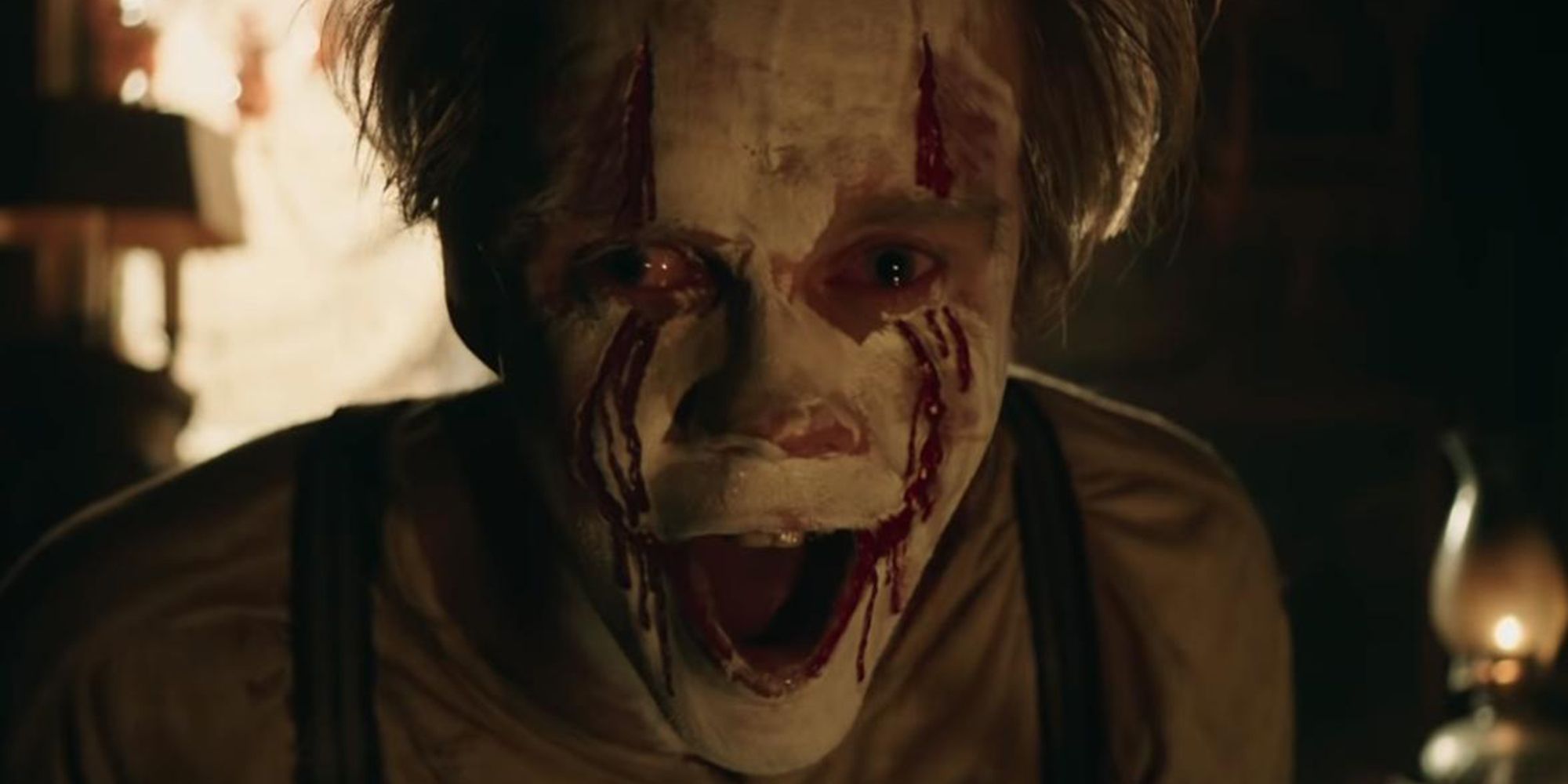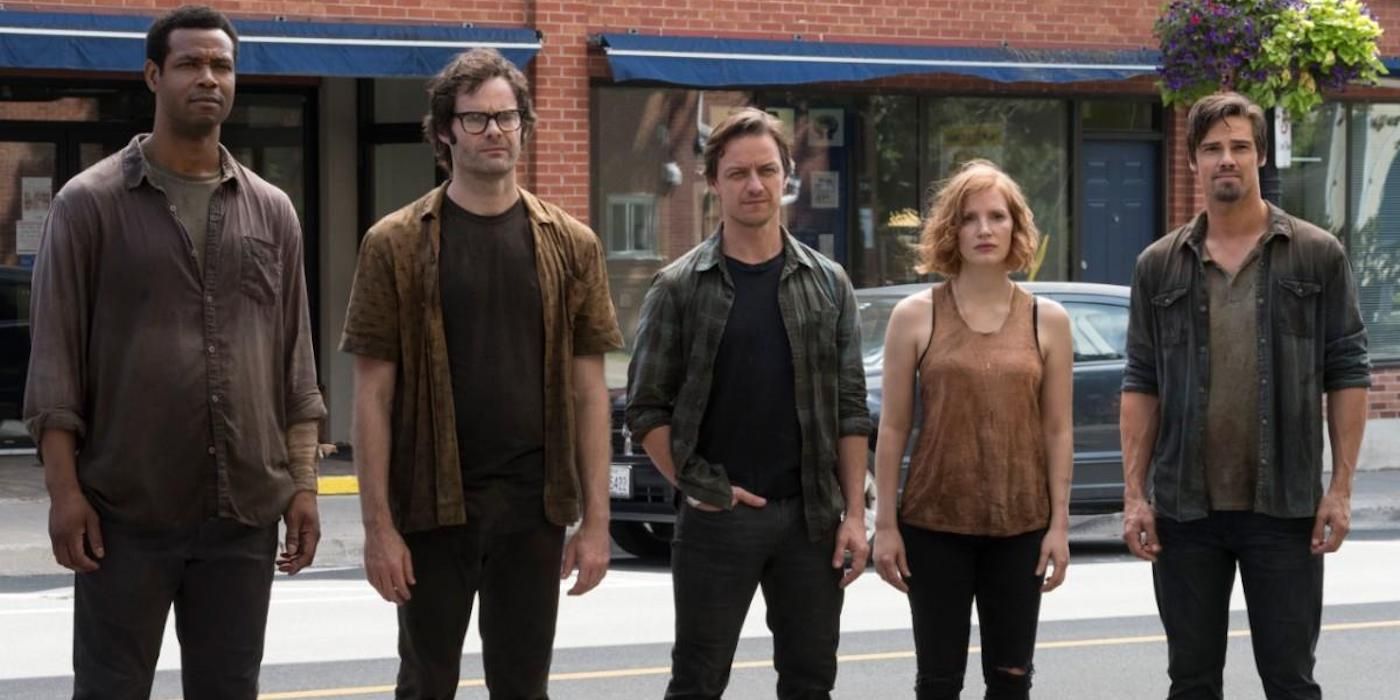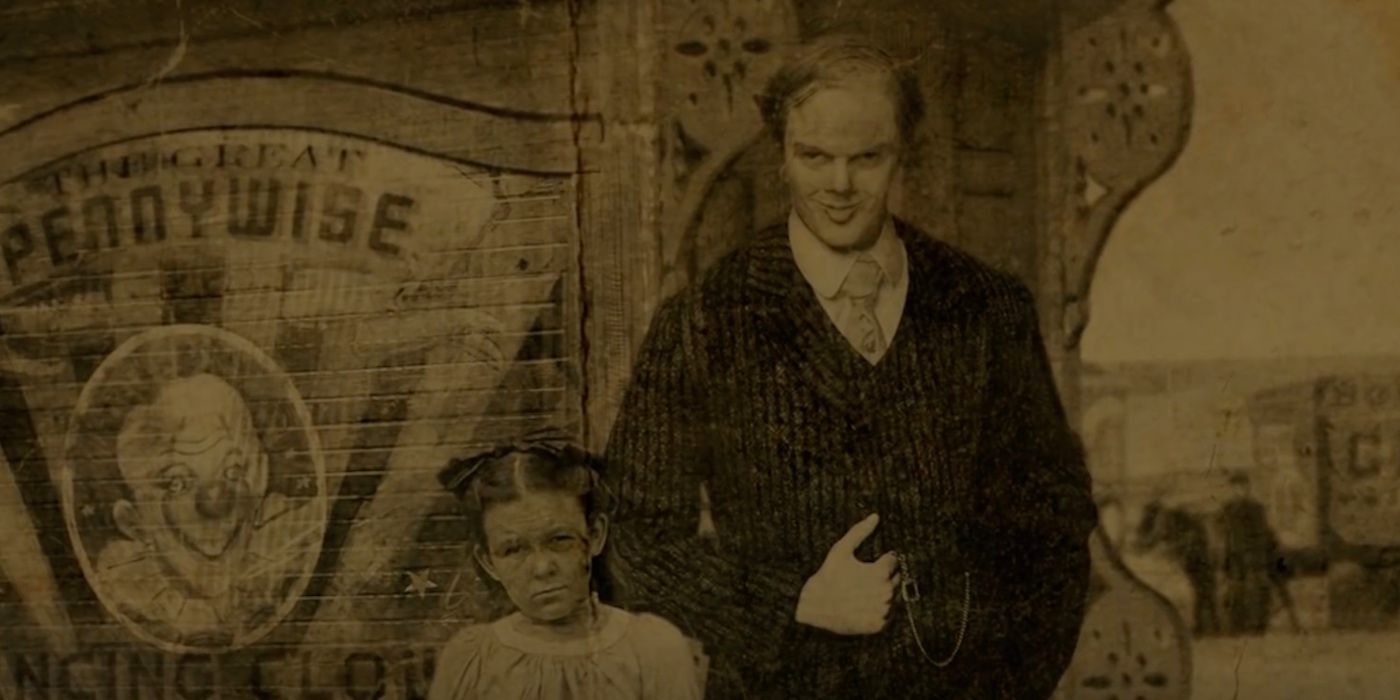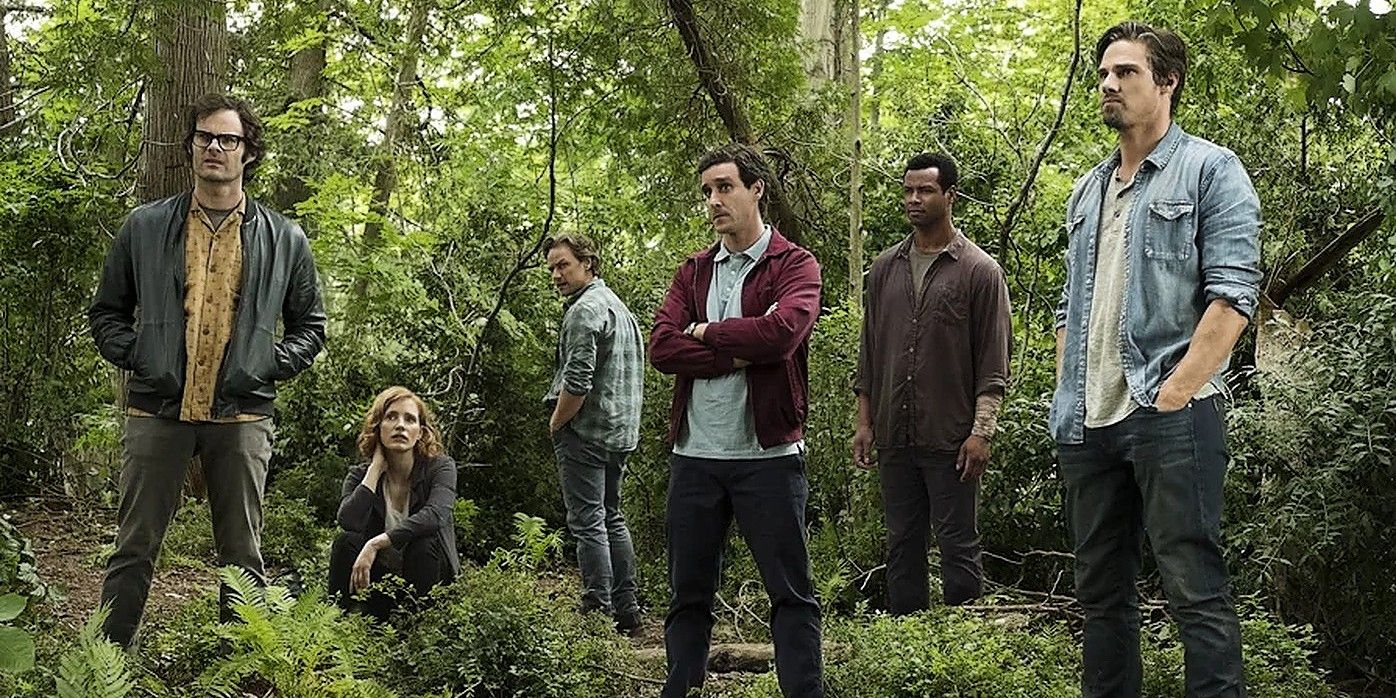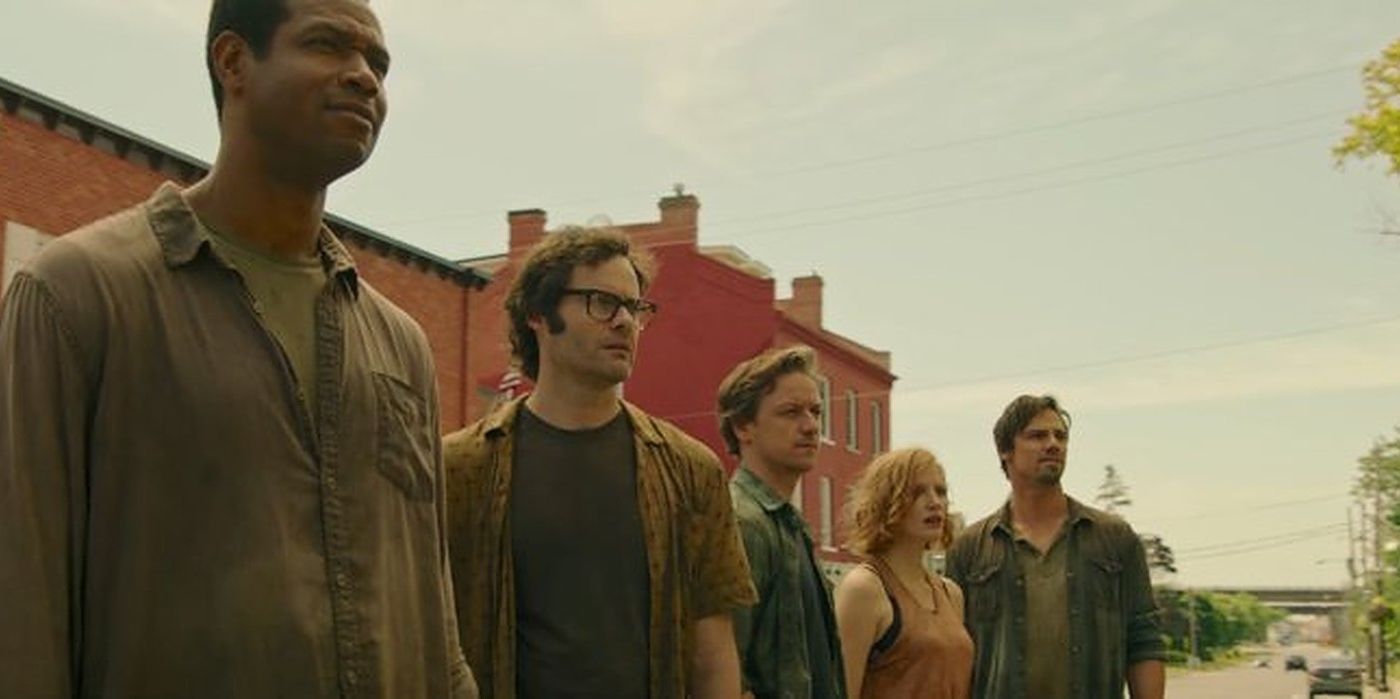WARNING: The following article contains spoilers for It: Chapter Two, in theaters now.
If You Lived Here, You'd Be Home By Now
Derry is cursed, and its residents are complicit in the darkness which lurks under the surface. We've seen glimpses of the this on screen with the homophobic punk kids who attack of Adrian Mellon in the opening of IT: Chapter Two as well as the creepy pharmacist who doles out Eddie's medication in 2017's IT. These figures who make up the fabric of Derry play major roles throughout all 1,100-plus pages of Stephen King’s 1986 novel. But Derry is worse than the sum of its residents.
The American small town filled with dread and people hell-bent on ignoring the sins of the past is the scaffolding upon which the story of IT is built. Sadly, its scaffolding far too many people can relate to. America, and the world at large, is made up of small towns. Some are bucolic and picturesque, snap shots of Americana. Others, no so much. But the most dangerous small town is one pretending to be the former to hide something intrinsically awful.
After Richie, Bill, Bev and the rest of the Losers' Club left their hometown, Mike Hanlon stayed behind to be the curator of what he referred to as “cycles” in Derry. The cycles were defined by various tragedies which seemed to occur every 27 years without fail. Despite the presence of Pennywise as a constant contributor to these cycles, the more you learn about the how the folks of the town handle these tragedies, the more you get the sense they would have unfolded in Derry even if a monster wasn’t lurking beneath it. The novel focuses on the history of Derry in interludes throughout its page count.
We learn of the racially motivated arson of a local nightclub, The Black Spot, which was frequented by African American patrons, including Dick O'Halloran from The Shining. The less-than-progressive townsfolk of Derry burned the gathering space down with people still inside back in 1930 and did so without remorse. We also discover in these interludes the shooting of the The Bradley Gang, a group of bank robbers during the 1930s crime wave, who were gunned down in the street by the town locals, most of whom were not acclimated to such violence. The more you learn about Derry's history or meet other people besides The Losers, you start to see a pattern of intolerance, hate and abuse.
Bring Out the Clown
Both the 1990 made-for-tv miniseries and the recent pair blockbuster film adaptations of the source material have gone to great lengths to make Pennywise a truly terrifying presence on screen, but the reason as to why IT has been able to burgeon for so many centuries in the same place is never really expanded upon. In the novel, it’s hard to tell if Pennywise simply fed off the negatively the population of Derry were projecting or if the people were influenced by Pennywise. The way Mike tells it, it might be a bit of both.
IT: Chapter Two (and its predecessor) touch on some of the tragedy of Derry, including the aforementioned Black Spot tragedy, but they are nothing more than window dressing on screen. It's unfortunate, because the implication of running from the ghosts of the past is far more horrific (and relatable) than a cannibalistic cosmic clown.
Casual Terror
Surely we've all been out in public and locked eye with someone who was vaguely familiar. You may not have remembered the person by name, but you recognized their face and knew at one point they left an imprint on you. That imprint may have been made by tender moment of kindness, perhaps they were a long-lost friend who helped you up after skin your knee on the playground blacktop. Or maybe the familiar face once sneered and espoused hurtful epithets as you were shoved up against a locker or out of a desk.
When you can’t remember which way that pendulum swung, it’s hard to know how to react when confronting a phantom of the past. That feeling of uncertain dread is personified by something far more enveloping than a childhood bully waiting outside for you to get out of class (although they are bountiful in the pages of IT as well). It’s the fractured roots and where they may lead which lead to the real source of anxiety and fear. It's one we all share.
The Bigger Picture
We look to the past to inform our vision of the future. But what happens when the past is filled with horrors and transgressions on a micro level? What does the future hold when you discover someone in your hometown, perhaps someone you share lineage with, has done something abhorrent? How does that affect emotional connections to your own personal history? IT asks these questions and answers them with casual violence and repressed memory. The novel contextualizes casual terror by pushing it to the nth degree. Scenarios that would otherwise be innocuous take on a new dimension. One that is rooted in nightmare logic and trauma.
Mike Hanlon's records of dark history of Derry revealed personal connections. He shared his story with of bigots, bullies, and real life monsters. The very ground upon which every members of The Losers’ Club call home is spoiled like a puddle of milk collecting at the bottom of broken fridge (one with flying leach monsters, maybe?). Each adaptation treats the absent adults and racial and homophobic views of the townspeople like window dressing. Even the town bullies and ancillary characters with dark pasts aren't explored in IT: Chapter Two with the same focus as the novel. Of course, film run times are most likely the biggest factor of this.
Fans of the novel are still left to wonder why the dark mind of Patrick Hockstetter, a boy who, in the novel, smothered his infant brother in his crib and mutilated stray pets for fun wasn't dragged out on the silver screen like a vampire on a sunny day. Where was the exploration of the fate of poor Eddie Corcoran, another victim of Pennywise who also suffered abuse at the hands of his guardian? Even the moments from IT and IT: Chapter Two in which we do see the darker edge of the adult inhabitants of Derry are played mostly for laughs (Eddie's mother) or as setups for cathartic moments (Bev's dad). Yet the novel treats the collectively rotten psyche of the town as the source of true terror. After all, plenty of horrific things happen in Derry while Pennywise slumbers.
It: Chapter Two stars Bill Skarsgård, James McAvoy, Jessica Chastain, Jay Ryan, Bill Hader, Isaiah Mustafa, James Ransone, Andy Bean, Teach Grant, Jess Weixler, Will Beinbrink, Xavier Dolan, Jaeden Lieberher, Sophia Lillis, Jeremy Ray Taylor, Finn Wolfhard, Chosen Jacobs, Jack Dylan Grazer, Wyatt Oleff and Nicholas Hamilton.

